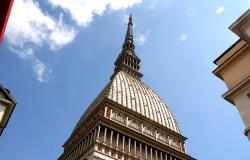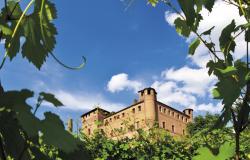Within a very short distance there is a lot for the visitor to Biella to see and do. Attractions include the Lago di Viverone, as well as the natural splendour of the lowland parks, the area’s castles, sanctuaries and vineyards - you can even try your hand at panning for gold. However, there is no doubt that the proximity to the mountains is the single main attraction. The Alpine charms of the Biella area are easy for the locals to enjoy as they are never more than half an hour from the mountains and can easily nip off for an afternoon’s skiing, snow boarding, paragliding or just a bracing walk through superb unspoilt mountain scenery. Foreign invaders have plagued the region over the centuries but these days it remains a relatively undiscovered area and an excellent destination for those wanting something a little different.
Taking Refuge
There are two main valleys leading up into the mountains. The best known is a winding road that leads to Oropa passing through forests and green foothills dotted with a few farm buildings, their roofs covered with massive tiles and offering winter shelter for the Pezzata d’Oropa, the distinctive brown and white cattle of the area.

At the end of the road, at an altitude of 1000 metres, is the Santuario d’Oropa a vast complex of chapels, cloisters, churches, courtyards, long corridors, royal apartments and dormitories all immaculately restored and imbued with an atmosphere of peace and reflection reinforced by the beautiful landscape that surrounds it. This is one of the most important sanctuaries in Italy and over 800,000 pilgrims make the journey to Oropa every year, mainly to visit the famous statue of the Black Madonna, the centrepiece of the old church. Whether you fancy a spot of spiritual uplifting or just an escape from the stresses of modern urban life, the Sanctuary has 300 elegantly refurbished rooms. Don’t worry, they have dropped their practice of insisting on proof of marriage for couples staying there!

Mountains and Polenta
The area around the Sanctuario is a wonderful area for walking or mountain biking and has a great deal to offer to those interested in bird watching, wildflowers, photography, painting and nice restaurants at Oropa where you can reward yourself for the day’s exertions.

Try the some of the local dishes such as 'polenta concia', a thick and very filling porridge-like soup made of polenta mixed with butter and cheese.
For the more adventurous hikers there are numerous refuges in the mountains and you can plan a trip hiking from one to another staying in their basic but comfortable rooms, sampling simple meals frequently featuring polenta and views that you just don’t see from the road below. If you want to experience the mountain peaks without extensive hiking there is a cable car from Oropa that takes you up to the Rifugio Savoia where you can walk to Lake Mucrone just below the 2335 metre summit of Monte Mucrone, or take a ski lift higher still to Monte Camino.
The Second Valley
The Cervo Valley is the other main approach to the mountains from Biella and begins around a large area of mill complexes once powered by the powerful waters of the Cervo River. The road following the river starts to become more scenic around Andorno where deep pools in the river offer tempting places for summer bathing. Once you reach the mountains you arrive at Rosazza a beautiful little town with stunning mountain views and totally altered in appearance by Federico Rosazza Pistolet (1813-99), its most notable citizen. The valley steepens a little as it reaches Piedicavallo, the veritable end of the road and a beautiful quiet mountain village.

A turning off the main road takes you to the star attraction of the area – the Panoramica Zegna, named after Ermenegildo Zegna, the founder of the huge fashion house who planned and financed this route starting in the 1930s.
 The result is a well-surfaced road with numerous areas to stop and enjoy the glorious views, but more importantly, the planting of thousands of trees and the protection and encouragement of all forms of native wildlife. In 1993, Zegna's heirs began working on the Oasi Zegna - Zegna Nature Preserve project as a natural development of the "green thinking of Ermenegildo". This was the first Italian example of environmental patronage and open air laboratory, focused on the relation between man, nature and culture of the mountain, with a particular focus on families and children.The Panoramica Zegna today is a 26-kilometre road which provides access to a wealth of outdoor activities including hiking with no less than 27 themed trails, skiing (the tastefully small ski resort and lift complex is at Bielmonte), snowboarding, cross-country skiing, horse riding, mountain biking with three marked trails, climbing, absailing and paragliding.
The result is a well-surfaced road with numerous areas to stop and enjoy the glorious views, but more importantly, the planting of thousands of trees and the protection and encouragement of all forms of native wildlife. In 1993, Zegna's heirs began working on the Oasi Zegna - Zegna Nature Preserve project as a natural development of the "green thinking of Ermenegildo". This was the first Italian example of environmental patronage and open air laboratory, focused on the relation between man, nature and culture of the mountain, with a particular focus on families and children.The Panoramica Zegna today is a 26-kilometre road which provides access to a wealth of outdoor activities including hiking with no less than 27 themed trails, skiing (the tastefully small ski resort and lift complex is at Bielmonte), snowboarding, cross-country skiing, horse riding, mountain biking with three marked trails, climbing, absailing and paragliding.

Thanks to a tunnel built by Rosazza, the two valleys mentioned are actually linked by a narrow mountain road that leads from the Santuario d’Oropa to the smaller Santuario S.Giovanni Adorno before climbing down to Rosazza.
Famous Peaks
Experienced (and seriously fit!) hikers might want to walk the Biellese section of the route known as ‘The Great Crossing of the Alps’.

The hiker can stay in a different refuge every night but the weather can be unpredictable here so such a trek should only be done with a guide to ensure your safety. In 2007 part of this famous hiking path was dedicated to Pope John Paul II who walked the route when he visited the Marian Shrine of Oropa in 1989. The complete crossing leads over the crests of the mountains and takes around a forthnight to complete! The Biellese section takes three or four days starting at the Alta Valle Cervo and follows a route surrounded by wild mountain scenery, with fantastic views of the most famous peaks of the Alps: Mont Blanc, the Matterhorn and Monte Rosa. The hiker can stay in a different refuge every night but the weather can be unpredictable here so such a trek should only be done with a guide to ensure your safety. Contact the helpful ATL office about this to organise your trip.














